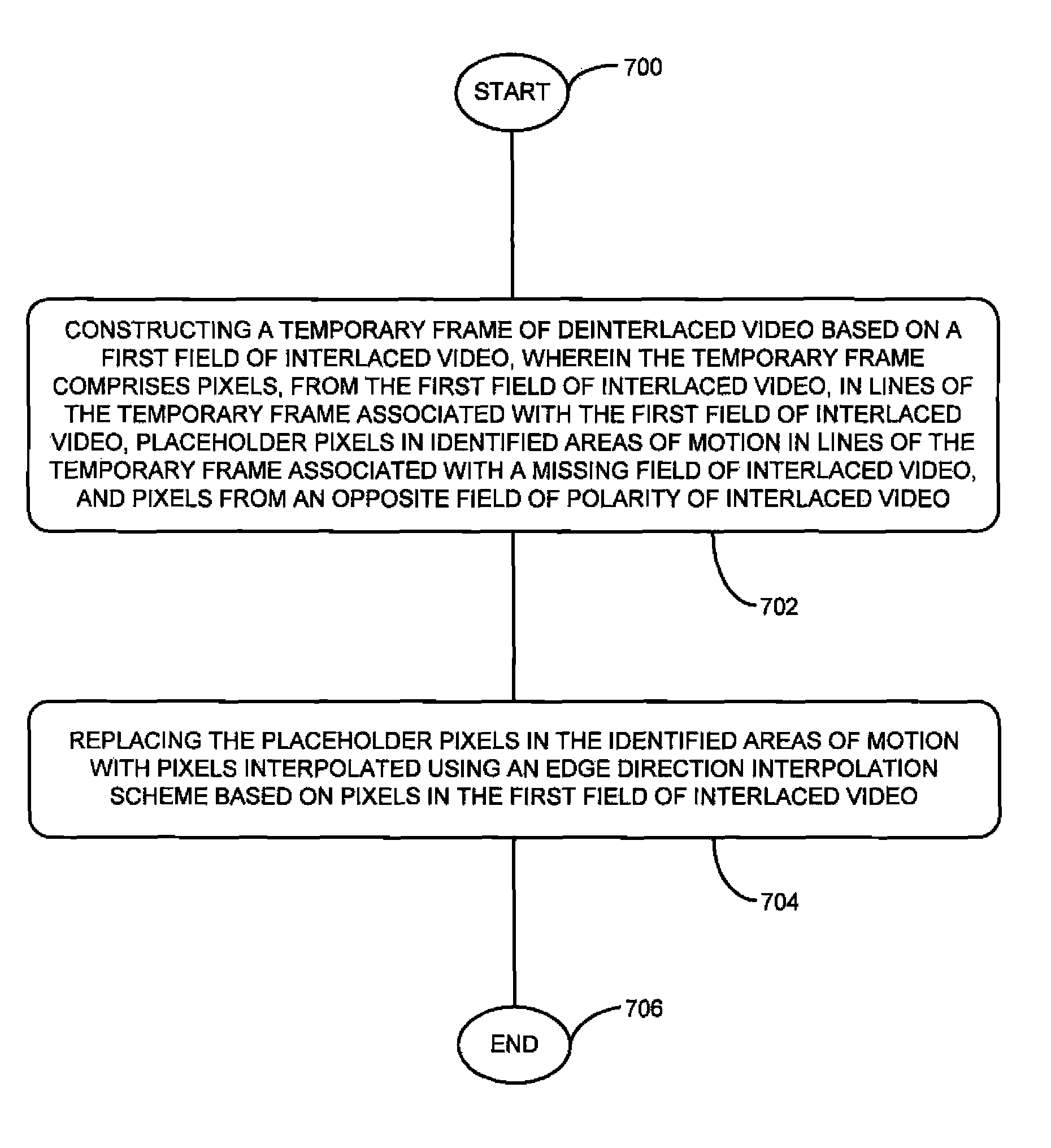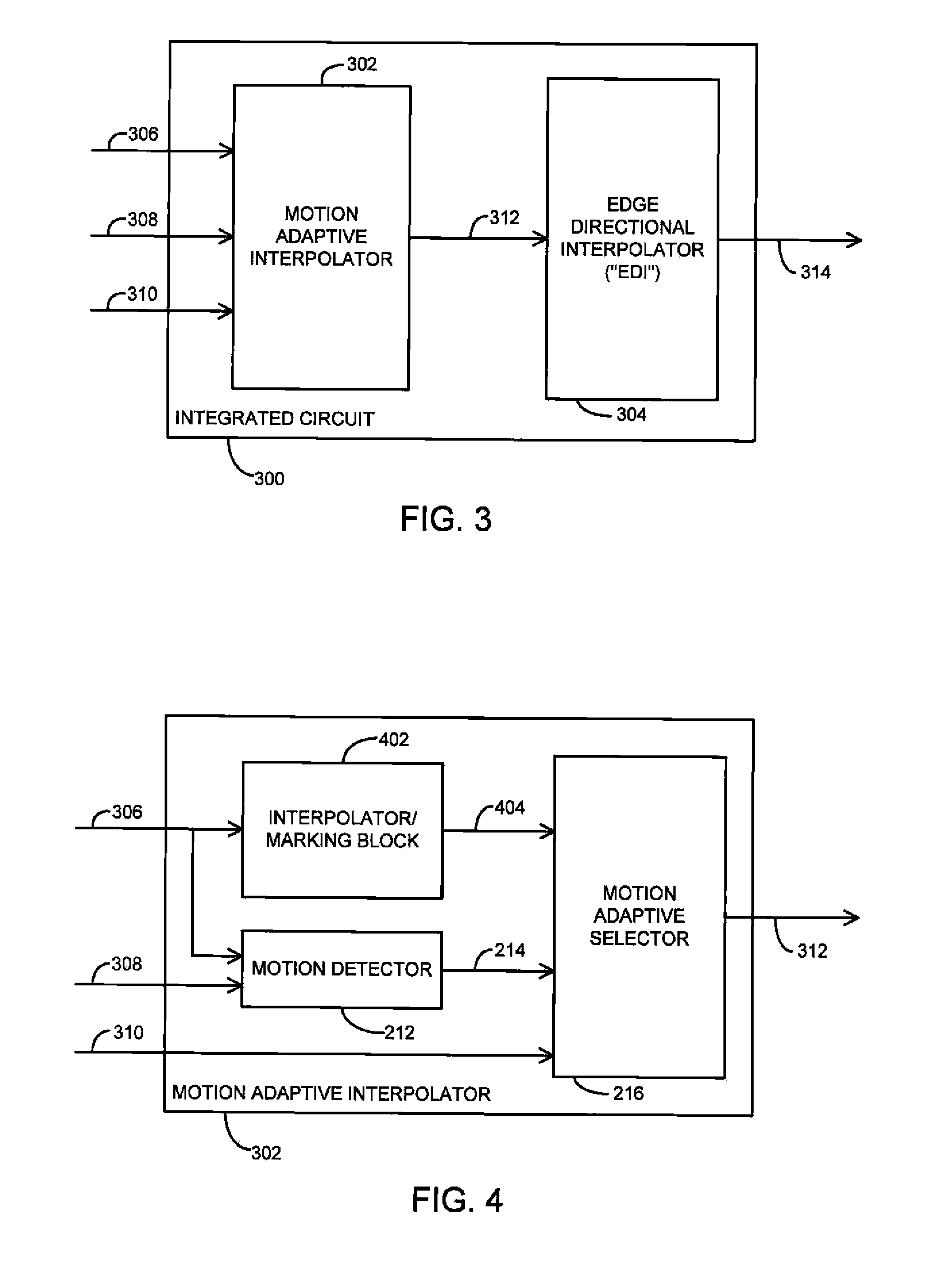Method and apparatus for high quality video motion adaptive edge-directional deinterlacing
a motion adaptive edge-directional and video technology, applied in the field of methods and apparatus for deinterlacing interlaced video, can solve the problems of reducing the vertical resolution of all spatial methods, requiring temporal interpolation in the creation of frames, and affecting the quality of the video
- Summary
- Abstract
- Description
- Claims
- Application Information
AI Technical Summary
Benefits of technology
Problems solved by technology
Method used
Image
Examples
Embodiment Construction
[0024]Briefly, a method for deinterlacing video includes constructing a temporary frame of deinterlaced video based on a first (i.e., current) field of interlaced video, wherein the temporary frame includes pixels in lines of the temporary frame associated with the first field of interlaced video, placeholder pixels in identified areas of motion in lines of the frame associated with a missing field of interlaced video, and pixels from an opposite field of polarity of interlaced video in areas without motion. The method further includes replacing the placeholder pixels in the identified areas of motion with pixels interpolated using an edge direction interpolation scheme based on pixels in the first held of interlaced video, resulting in a reconstructed frame. In one example, a motion adaptive interpolator may construct the temporary frame, and an edge directional interpolator may generate the reconstructed / deinterlaced the frame.
[0025]In another example, the method and apparatus may...
PUM
 Login to View More
Login to View More Abstract
Description
Claims
Application Information
 Login to View More
Login to View More - R&D
- Intellectual Property
- Life Sciences
- Materials
- Tech Scout
- Unparalleled Data Quality
- Higher Quality Content
- 60% Fewer Hallucinations
Browse by: Latest US Patents, China's latest patents, Technical Efficacy Thesaurus, Application Domain, Technology Topic, Popular Technical Reports.
© 2025 PatSnap. All rights reserved.Legal|Privacy policy|Modern Slavery Act Transparency Statement|Sitemap|About US| Contact US: help@patsnap.com



